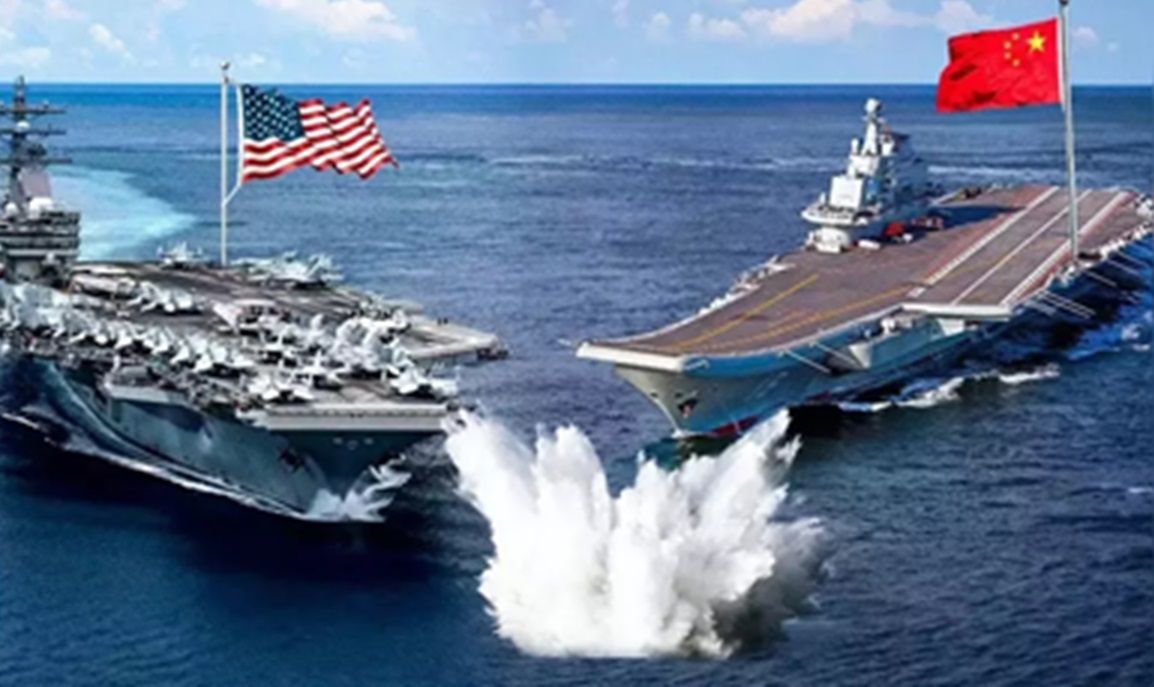
The South China Sea (SCS) has emerged as a key arena in the growing rivalry between the United States and China. This vast maritime territory, connecting the Indian Ocean to the Pacific, is much more than just a shipping route; it is estimated that more than $3 trillion in global trade passes through its waters every year. But it is not just trade that is at stake. The region is rich in natural resources, such as oil and gas, making it a strategic enclave coveted by international powers.
At the heart of this dispute, China has adopted an ambitious and controversial strategy, reasserting its control over most of the South China Sea by building artificial islands and installing military infrastructure. Meanwhile, the United States, championing freedom of navigation, has conducted military operations in the area to counter China’s growing actions.
China’s strategic objectives
China’s military approach in the South China Sea is based on four key pillars that, beyond territorial sovereignty, seek to consolidate its influence in the region:
- Regional Influence and IntegrationThrough infrastructure projects such as the Nanning-Singapore Economic Corridor, China seeks to strengthen its economic ties with Southeast Asian countries, positioning itself as a regional leader.
- Territorial SecurityChina’s territorial claim is based on the so-called “Nine-Dash Line,” a historic demarcation that Beijing says grants it sovereignty over most of the South China Sea, including areas disputed by other countries such as Vietnam and the Philippines.
- Resource Control:Securing access to the vast oil, gas and fishery resources of the MCM is essential to China’s economic strategy, which sees the region as a vital source of long-term growth.
- Maritime SecurityChina has reinforced its military presence in the region by building artificial islands, where it has deployed missiles, radars and fighter jets. These islands act as a strategic buffer to protect its eastern coast and urban centers.
Tensions with the United States
The US military presence in the South China Sea has been constant and challenging for Beijing. Washington has carried out repeated “Freedom of Navigation Operations” (FONOPs) aimed at challenging China’s territorial claims and keeping global trade routes open. These maneuvers have provoked diplomatic and military responses from China, which sees the US intervention as a direct threat to its sovereignty.
The increased military presence in the region by both powers has led to a state of “tense calm.” Although there have been no large-scale direct clashes, analysts agree that any mistake or misunderstanding between US and Chinese forces could trigger a wider conflict.
The Scarborough Bank Incident: A Turning Point
One of the most critical moments in this rivalry came in 2012, during the standoff between China and the Philippines over control of the Scarborough Shoal, a disputed area in the South China Sea. It all began when the Philippines tried to stop Chinese fishermen in the area. China quickly responded by deploying surveillance ships, blocking Philippine access to the region. Despite US attempts at mediation, China ended up controlling the area, a diplomatic and strategic blow for the Philippines.
This incident marked a turning point in the military dynamics in the South China Sea. For the Philippines, it meant a further rapprochement with the United States in search of military support, which resulted in the Enhanced Defense Cooperation Agreement (EDCA). For China, it was a decisive step in its de facto control of key territories in the region.
An expanding battlefield
The US-China rivalry in the South China Sea reflects the broader geopolitical tensions between these two superpowers. While China continues to build its historical narrative to justify its presence in the region, the US remains steadfast in its role as a counterweight, ensuring that global trade is not held hostage to territorial disputes.
This tug-of-war in the South China Sea not only affects bilateral relations between Beijing and Washington, but also puts Southeast Asian nations in a delicate position. The ever-evolving dispute will remain a hot spot on the global geopolitical chessboard.
Note: This is an article republished from the «Defence, Research and Studies» media outlet through a cooperation agreement between both parties for the dissemination of journalistic content. Original link.
Adarsh is pursuing his post-graduate degree in International Relations from Amity Institute of International Studies, Noida.
Source: https://reporteasia.com/opinion/2024/09/11/mar-china-meridional-tension-estados-unidos-china/

